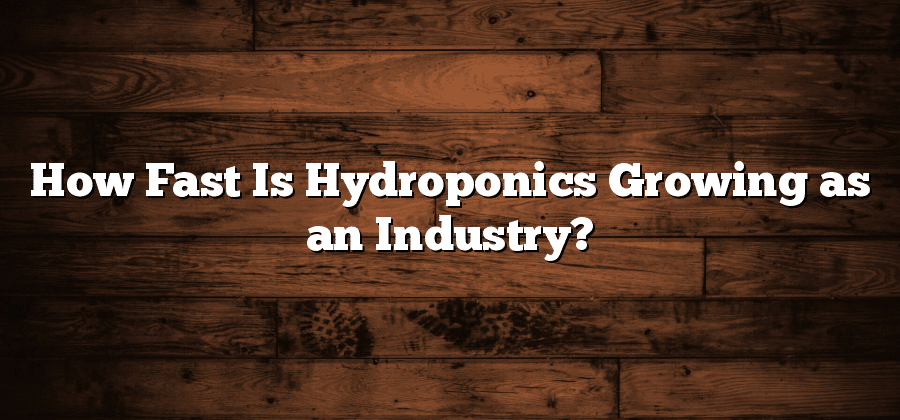Hydroponics Market Overview
Hydroponics, a unique method of growing plants without soil, has gained significant traction in recent years. This innovative approach is steadily gaining popularity due to its numerous benefits and potential for sustainable farming practices. The hydroponics market has witnessed robust growth, driven by increased awareness of food security, changing climatic conditions, and the growing demand for organically grown produce.
The hydroponics industry is experiencing a surge in adoption across various sectors, including commercial agriculture, urban farming, and home gardening. This trend can be attributed to the advantages offered by hydroponics, such as higher crop yields, efficient resource utilization, and reduced environmental impact. With advancements in technology and the availability of advanced equipment and systems, growers can now create optimal growing conditions, thereby maximizing their productivity and profitability. Additionally, the hydroponics market is witnessing significant investments from governments, private companies, and venture capitalists, further driving its growth and development.
Current State of the Hydroponics Industry
Hydroponics, the practice of growing plants without soil, has gained significant momentum in recent years. The hydroponics industry is currently experiencing a period of substantial growth, driven by various factors. One of the key drivers is the increasing demand for fresh produce, especially in urban areas where land for traditional agriculture is limited. Hydroponics allows for the cultivation of crops in vertical farms or indoor settings, making it a viable solution to meet the growing need for locally grown, pesticide-free fruits and vegetables.
Another factor contributing to the current state of the hydroponics industry is the rising awareness about sustainability and the need for efficient resource utilization. With traditional farming methods often requiring extensive amounts of water and land, hydroponics provides an appealing alternative. By using nutrient-rich water solutions, hydroponics can reduce water consumption by up to 90% compared to conventional farming. Additionally, it can also minimize the use of pesticides and fertilizers, making it an environmentally friendly choice. As consumers become more eco-conscious, the demand for hydroponic produce continues to soar.
Factors Driving the Growth of Hydroponics
The exponential growth of hydroponics is primarily driven by several key factors. First and foremost, the increasing global population combined with diminishing arable land has necessitated the need for alternative agricultural practices. Hydroponics, with its ability to produce high yields of crops in limited space, has emerged as a viable solution to address this challenge.
Additionally, the growing consumer demand for locally grown and pesticide-free produce has further propelled the adoption of hydroponics. With concerns over the environmental impact of traditional farming methods and the desire for healthier food options, consumers are increasingly drawn towards hydroponic systems that enable year-round cultivation of fresh, nutritious crops. This shift in consumer preferences has significantly contributed to the rapid expansion of the hydroponics industry.
Technological Advancements in Hydroponics
Hydroponics, as a method of cultivation, continues to undergo significant technological advancements. These innovations aim to improve efficiency, productivity, and sustainability within the hydroponics industry. One area that has witnessed remarkable progress is the development of advanced sensors and monitoring systems. These technologies allow growers to closely monitor crucial factors such as pH levels, nutrient concentration, and temperature, ensuring optimal conditions for plant growth. By providing real-time data and alerts, these systems empower growers to make informed decisions, take corrective actions, and maximize crop yields.
In addition to advanced monitoring systems, the field of hydroponics has embraced automation to enhance production processes. Automated irrigation systems, for instance, eliminate the need for manual watering, ensuring precise and consistent delivery of nutrients to plants. This not only saves time and labor but also optimizes resource usage by preventing over-watering or nutrient wastage. Furthermore, the integration of cutting-edge technologies such as artificial intelligence and machine learning enables growers to analyze vast amounts of data, leading to more accurate predictions and better decision-making. With these technological advancements, hydroponics is poised to revolutionize the agriculture industry and address global food security concerns.






